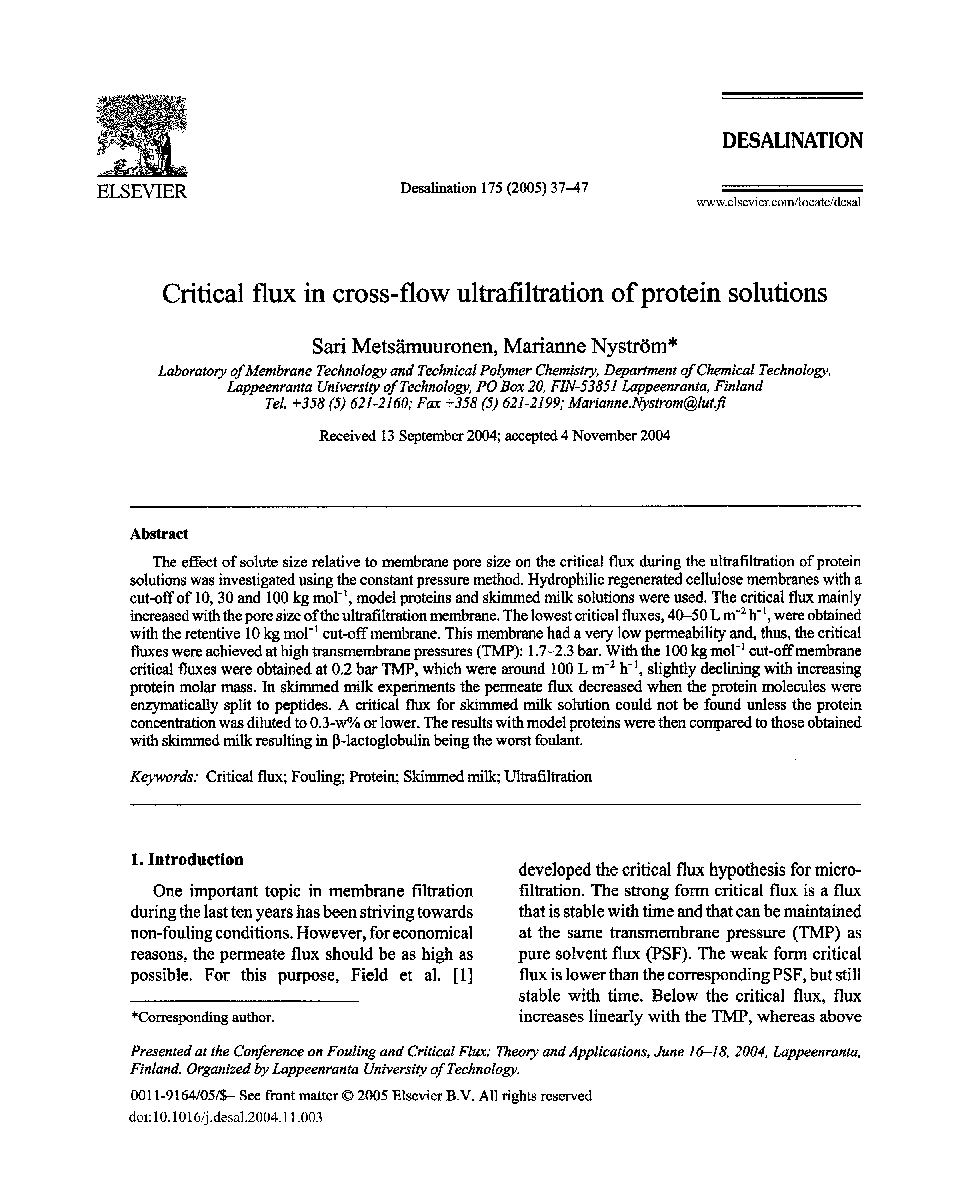| Article ID | Journal | Published Year | Pages | File Type |
|---|---|---|---|---|
| 10386333 | Desalination | 2005 | 11 Pages |
Abstract
The effect of solute size relative to membrane pore size on the critical flux during the ultrafiltration of protein solutions was investigated using the constant pressure method. Hydrophilic regenerated cellulose membranes with a cut-off of 10, 30 and 100 kg molâ1, model proteins and skimmed milk solutions were used. The critical flux mainly increased with the pore size of the ultrafiltration membrane. The lowest critical fluxes, 40-50 L mâ2hâ1, were obtained with the retentive 10 kg molâ1 cut-off membrane. This membrane had a very low permeability and, thus, the critical fluxes were achieved at high transmembrane pressures (TMP): 1.7-2.3 bar. With the 100 kg molâ1 cut-off membrane critical fluxes were obtained at 0.2 bar TMP, which were around 100 L mâ2 hâ1, slightly declining with increasing protein molar mass. In skimmed milk experiments the permeate flux decreased when the protein molecules were enzymatically split to peptides. A critical flux for skimmed milk solution could not be found unless the protein concentration was diluted to 0.3-w% or lower. The results with model proteins were then compared to those obtained with skimmed milk resulting in β-lactoglobulin being the worst foulant.
Related Topics
Physical Sciences and Engineering
Chemical Engineering
Filtration and Separation
Authors
Sari Metsämuuronen, Marianne Nyström,
